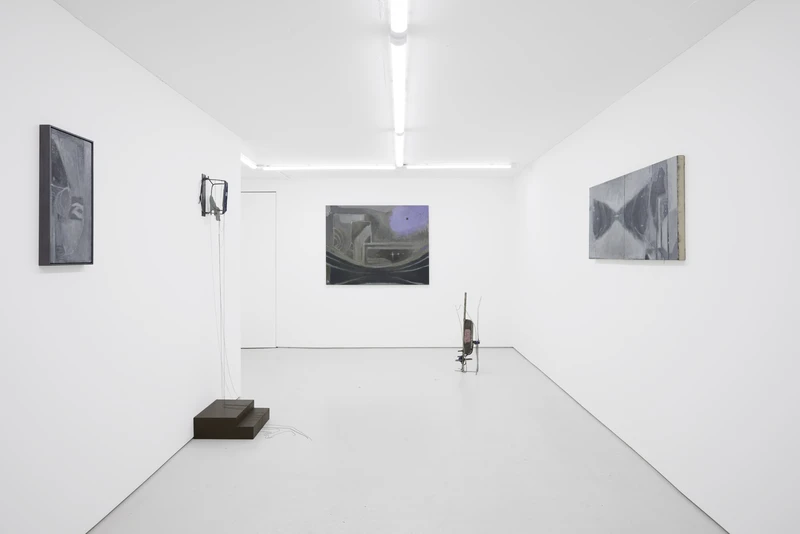Yi To: To be dispersed, not to disappear
31 May-6 Jul 2024
PV 30 May 2024, 6-8pm


The metaphor of excavation plots the line of enlightenment. Ours has been a constant search for the grammar of life: methods by which we can extract sense from non-sense, decipher meaning from chaos, find vocabulary for the wisps we once resorted to calling ‘ghosts’. In its making visible the invisible, the act of excavation seeks to rescue the intelligible from the darkness of ignorance by reconstituting, piecemeal, fossilised memory. So begins the philosophical conundrum in which Hong Kong born artist Yi To prefigures the materiality of fragmented body, and its reappearance in the virtual as sign.
What happens with the immense onslaught of time, its unerring passage? A document, artefact or vestige of life that endures erasure appeals to the unconscious vis a vis aesthetic sensibility before anything else. Like To’s work, that which issues from bygone eras hovers someplace between figuration and abstraction, and occasions a reading that relies, firstly, on intuition. From the presence of the golden spiral in the human ear, to the ability of an amoeboid organism to solve a maze, to the sophistication of the self-assembling flagellum, the wonderment in intuition is perhaps its intimation of intelligent design.
To’s intervisuality is thus a holding-in-contradiction of both the spectacle of discovery and the withdrawal of nether worlds that cannot fully be known. Her paintings, with their shadowy forms rendered in thin washes, beget a fragility. They take on the propositional aspects of loss, an eclipse’s negative memory; as with the yet-to-be-discovered relic, what results is the invocation of a waiting. What of the total indifference of these subjects to the indefatigable curiosity of the present? What of the misapprehension of a cave painting that derails studies of early life for another thousand years?
The fascination of To in working with the ambiguity of primary forms suggests we approach the mystery of the world as either encrypted, veiled, or an illusion requiring some kind of denudation. Her specific choice of overcast palette – be it soft Verdigris, greying mould, or healing bruise – confounds the interpreter’s authority to strip or lay bare. In Buddhist culture, depictions of young female corpses represent impermanence and the ephemeral nature of identity coherence: the contemplation of their splayed bodies has everything to do with denudation, deconstruction and dispersal. If To’s work is ‘a thought experiment turning the body inside out’, then the significance of this reference is in its anxiety-ridden becoming: from intellectually-bound life to its transformation into bone, gristle and, ultimately, effervescent sign. For the body transcended is precisely what permits its crossing realms human and non-human. Spanning time and space, To’s intervisuality comes to bear in another speculative gesture: a series of spindly sculptures suggestive of techno-syncretic fossils that, like interpretation, is capable of endless recombination given time.
A thing of absurd misfortune is that interpretation is the essence of our study, yet at the same time unavoidably perverts it. This, To’s practice works with: achingly unanswerable questions, adumbrate shapes that may withstand temporal wearing, but are otherwise unable return to Earth as concrete form. In To’s work, it is therefore only absence that proposes itself, and must then lay in wait. Nothing to be done. So begins Samuel Beckett’s existential two-act deadlock Waiting for Godot, never so aptly summed as: ‘in which nothing happens. Twice.’
Text by Elaine ML Tam